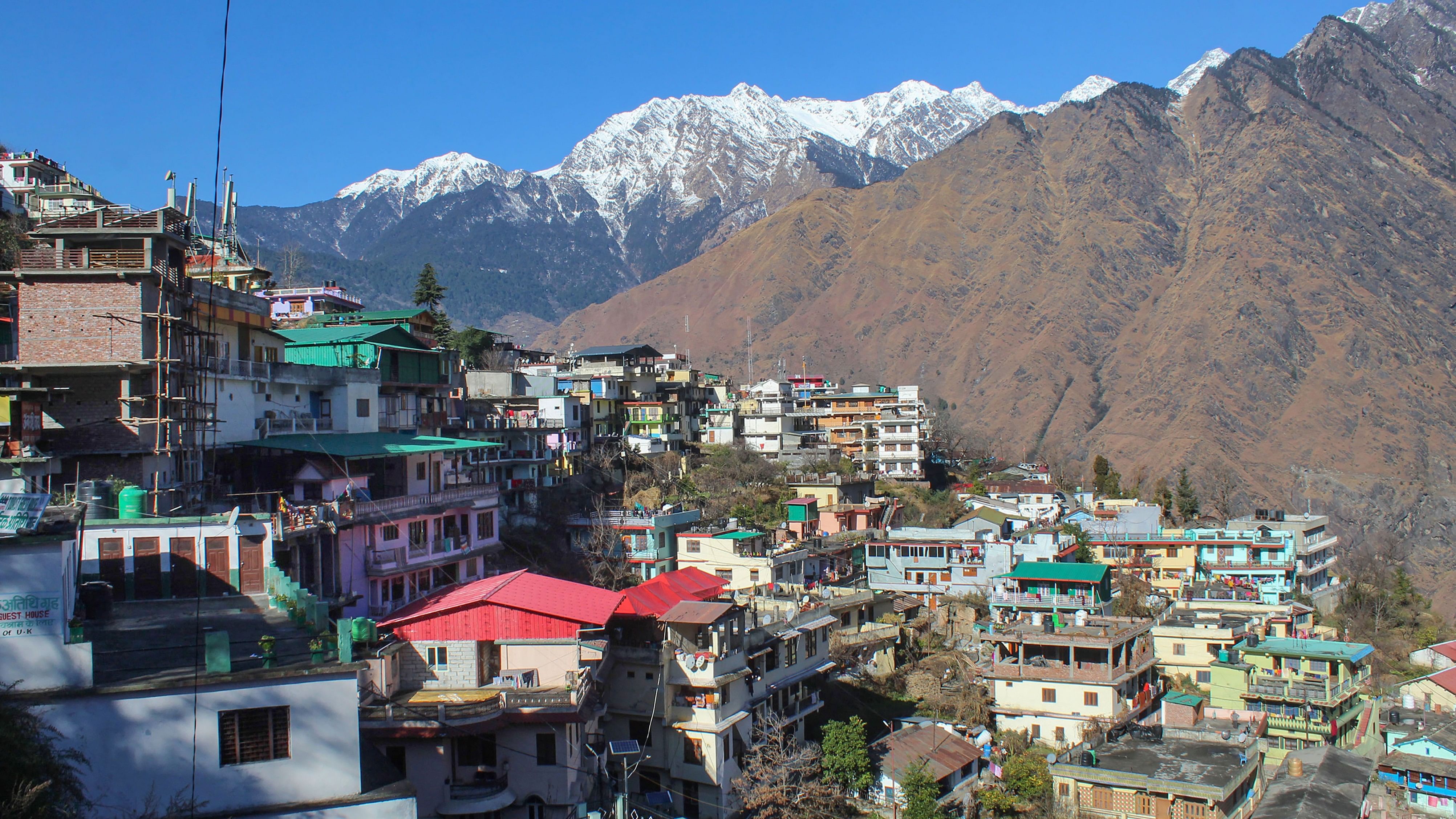
High density of building construction seen at the land subsidence affected area in Joshimath.
Credit: PTI Photo
Financial assistance should not be provided if the affected households in the subsidence-hit region of Joshimath in Uttarakhand do not have a valid land-ownership document or the buildings have been illegally encroached, a government report has recommended.
The report also recommended designating no-building zones in the land-use maps and denying any grant or relief to buildings constructed in such zones should there be a disaster.
Starting January 2, a number of houses and civil structures in an area located near Joshimath-Auli road began to display major cracks due to land subsidence, prompting the relocation of 355 families.
According to local residents, land subsidence had been noticed over several years but became increasingly severe from January 2 to January 8.
A 35-member team consisting of professionals from the National Disaster Management Authority, UN agencies, Central Building Research Institute, National Institute of Disaster Management, and other agencies conducted a 'Post Disaster Needs Assessment' from April 22 to April 25 to assess the damage caused and to identify the assistance required for the long-term recovery and reconstruction of the affected sectors.
To prevent future disasters, the report emphasises the importance of proper documentation and compliance with building regulations.
'No financial assistance will be provided to the buildings illegally encroached and/or if the HH (household) does not have a valid land-ownership document,' the report said.
The agencies also highlighted the necessity of officially informing the people of Joshimath about the unsafe zones of the town, where no new construction should be allowed.
In terms of development and housing, the report recommended careful planning at the three relocation sites while viewing this process as an opportunity to expand tourism in the area.
It suggested creating a micro zonation map for landslides in Joshimath, which should also incorporate seismic and landslide vulnerabilities.
Building structures should align with the multi-hazard maps to ensure safety, it said.
'Designate the no-building zones in the land-use maps. Anyone building in the no-building zones will not be entitled to receive any government facilities (grants or reliefs) should there be a disaster,' the report read.
The report also highlighted the need for a mechanism to conduct structural health audits of existing buildings. This proactive approach can identify vulnerabilities and prioritize retrofitting efforts.
The report suggested implementing a town planning act and reducing the burden on Joshimath by regulating construction and creating open spaces. The transit population should also be managed to alleviate the town's resources, it said.
With Joshimath serving as an economic hub, the report recommends decentralising economic activities to areas where rehabilitation is taking place. This move can distribute economic resources more equitably across the region and reduce the strain on Joshimath's infrastructure.
The report said that local wisdom in resilient house building should be revived and made accessible through awareness campaigns.
A techno-legal regime is recommended, based on hazard-zonation maps and building rules at the house level.
Guidelines for hillside construction should be developed by an expert committee at the state level, drawing on successful examples from other regions.
The agencies also suggested providing access to insurance for residents, with inspectors trained to assess multi-hazard risks and calculate premiums.
According to a bulletin released by the district administration in April, 868 houses in Joshimath have been identified as having cracks, and 181 houses have been marked as unsafe for living.
Incidents of land subsidence in Joshimath were reported in the 1970s too. A panel set up under the chairmanship of Garhwal Commissioner Mahesh Chandra Mishra submitted a report in 1978, stating that major construction works should not be carried out in the city and the Niti and Mana valleys as these areas are situated on moraines a mass of rocks, sediment, and soil transported and deposited by a glacier.
The Himalayan town lies in seismic zone V and is prone to landslides, flash floods, and earthquakes.
In 1999, an earthquake of 6.8 magnitude on the Richter scale shook Chamoli district, causing massive destruction in the district.
On February 7, 2021, severe flooding caused by heavy rainfall and a glacial burst in the nearby Rishi Ganga river ravaged Joshimath. The floodwaters also damaged two hydroelectric power plants located downstream from the Rishi Ganga river. The Tapovan Vishnugad hydroelectric power plant suffered the most damage, with many of its workers and staff missing or presumed dead.